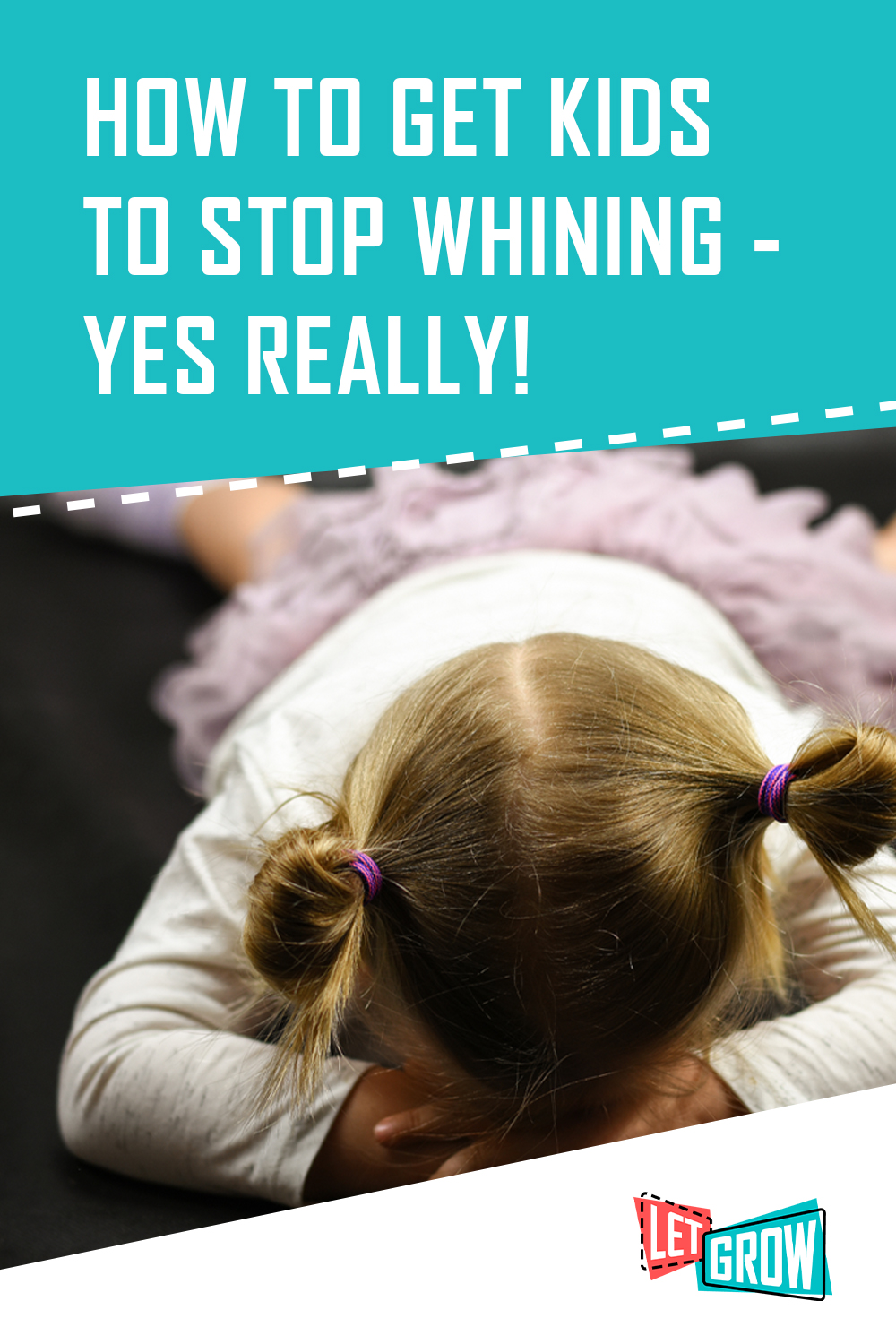






How to Get Your Kids to Stop Whining—Yes, Really
I get up early to write before my two minions, ages three and four, open their eyes. I dash out of bed to turn on the coffee maker and wait. With coffee in hand, I dart back to my bed to write. Some days I manage to get an hour in before they wake up. Other days a few minutes. I usually lock my door so that they can’t enter. This gives me extra time to finish up a story or to savor the last sip of coffee.
Some days they respect the locked door; other days, they whine and knock until I open it. Once I do, my kiddos come bounding in wearing matching Mickey and Minnie Mouse pajamas, hair wild and ready to play. My son clutches his favorite lovey, a LEGO Darth Vader stuffy.
My daughter whines for me to pick her up and fold her into my bed. In seconds, I have one squeezed on either side of me. My king-size bed becomes a canoe. Even though I can barely type, I continue to tap out words with one finger, praying to finish my last thought, word, or letter. My daughter whimpers that her brother is sitting closer to me. My son demands that I play with him. In less than a minute, both whine that they’re hungry.
I need to pee, but both will insist on coming with me. I regret the no-TV rule during the weekdays. By the time I go to the bathroom (a process that ends with one handing me toilet paper and the other offering to flush the toilet), my children have whined to express a need, to demand my attention, to get a hug, and to help me with my bodily functions.
While this may feel like an episode of My Own Personal Whiny World, I know that I’m not alone. How to get your kids to stop whining is a popular topic in mom groups and online. You can find advice from experts on how to stop the whine escapades, so I thought I’d put some of their principles in practice to see what results I could manage in my own life. Who knows, I may even solve the problem, get my kids to stop whining, and go to the bathroom by myself.
To get kids to stop whining, let’s understand why they whine in the first place.
Whining, I learned, is a way to express feelings, whether it’s sadness, anger, or frustration. Kids at any age belt out emotions in various octaves or in a whiny chant (as my son does when he demands to go to the playground), but the good news is that whining peaks between 2 and 4 years old. Not that we’re ever off the hook completely. As soon as we get through the toddler years, other challenges, such as homework and screen time, may elicit a series of whining incidents. Still, it’s good to know the window.
Whining can also mean our children, especially toddlers, are asserting their independence. While becoming independent is positive and natural, it may lead to constant demands of “I want, I want.” When kids are told no, or given boundaries, whining, or even a full-blown tantrum, can erupt.
Our children’s temperaments play a role in whining. Both my children are strong-willed in different ways. My son has outstanding verbal skills and can articulate his innermost thoughts with aplomb (only over and over again). “If you give me a fruit snack, I’ll give you all the time you need. Now, doesn’t that sound like a fair deal?”
This of course isn’t true. He’s back asking for another fruit snack as soon as he’s finished. Roughly, two minutes. And my daughter whimpers in a low moan until I give in to her desires. Usually it’s that I carry her around. She believes walking is for the lesser folk. She sounds like a baby minion with nasal issues.
So, how can we get our kids to stop whining?
In their book No-Drama Discipline, Daniel J. Siegel, MD, and Tina Payne Bryson, PhD, authors of the Whole-Brain Child, suggest asking questions when our children are whining or having a tantrum.
- Why is she whining?
- What do I want to teach her right now?
- How can I best teach the lesson?
By asking these questions, we can better understand and connect with our children to help ease the whining and turn it into a teachable moment. While having the time and patience to do this every time is impossible, keeping the questions in mind is a technique that may help. Honestly, I find the questions annoying, but it reminds me to connect with my kiddos. Instead of giving in to their demands, I take a breath, get down my knees, and look in their eyes. I find that taking the time helps me connect.
Try to respond with positive statements.
There are times when our whiny children bring out a negative response. It’s impossible to be perfect as parents, but trying to respond with positive words and encouragement helps us raise well-balanced children. Studies have shown a link between parents’ negative emotions and children’s behavior problems.
Sasha Johnson, a childcare manager with a master’s in child development, says that to get a child at her preschool to stop whining, she puts on a happy face. She’ll say to the kid with a big grin, “Do you want to be in a happy town with us? We are going to do fun stuff.” Then in a mock sad face she’ll continue: “Or do you want to stay in a sad town?” She says that blasting them with positive energy helps her remain emotionally balanced and the kids can’t help but respond positively by leaving the whining cycle.
Responding positively seemed to help, but my kids suspected fraud and stared at me like I’d lost my juice box. My advice is to wholeheartedly embrace the positive flow; otherwise, your kids may think something strange is happening with you.
Remember to react consistently.
I don’t know about you, but being consistent is hard. As a child, I knew to keep asking my dad the same question over and over again until he caved. The tactic was simple and effective. Simply Psychology discusses operant conditioning, which was put forth by B.F. Skinner, a psychologist and behaviorist more than 100 years ago. The principle is that a positive outcome encourages a repetition of that behavior and a negative outcome doesn’t.
For example, if your child whines to watch YouTube and you give in to that demand, your kiddo views this a positive outcome and will continue to whine when you say no tomorrow. Yes, in that moment they stop whining when you say yes, but the negative behavior has been reinforced with a positive result. Saying yes in that one instance will encourage the child to continue to ask from then on. I’ve found that choosing a tactic and sticking with it is the best advice.
Ignore the behavior (if you can).
If all else fails, ignore the behavior. It’s better to tell kids you’re going to ignore them outside of a whiny moment. This way they can hear you better. First accept and acknowledge the child’s feelings and then tell them if the whining continues, you’re going to ignore them. When children whine, any kind of response, negative or positive, is attention from you, and by not engaging at all, you take away any kind of reward. My kiddos hate to be ignored, so this is a useful tactic.
I’ve found that while I haven’t been able to get my kids to stop whining completely, these techniques have given me the tools I need to respond positively to whiny demands and behavior. They really do work—now, how can I sneak away to go to the bathroom by myself?




Comments are closed for this article.